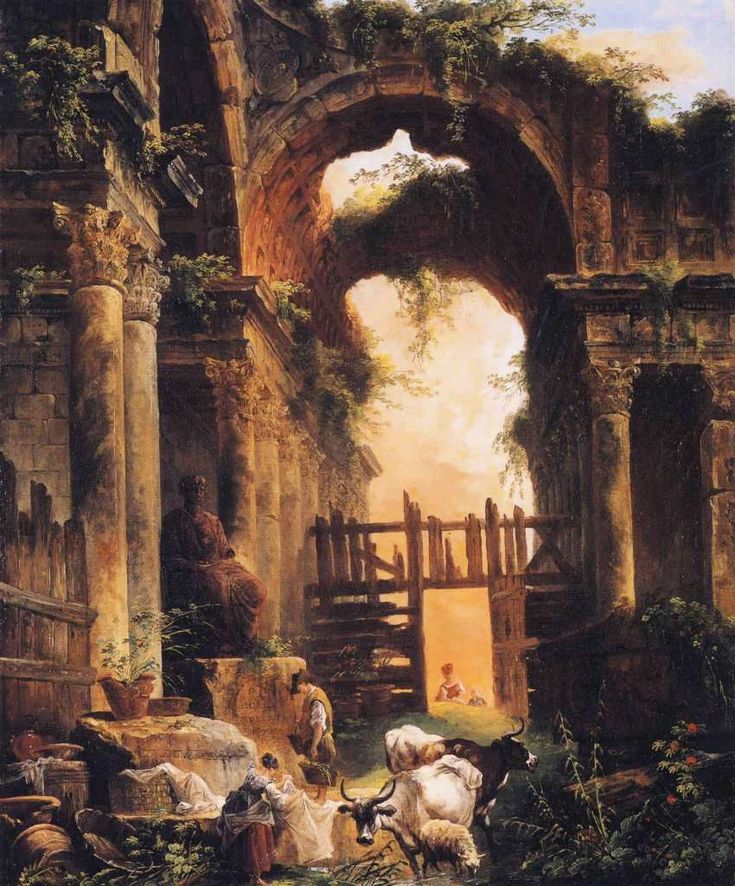Ruins of Old Valia
By order of the Senate, no more palaces or residences shall be built north of the bridge. Also, it is forbidden to those who own cattle to move their cows west of the northern road under penalty of a fine of 3 florins. The damage that these cows made to private property and also to the old public buildings will also be paid in coin by their owners.Approved by the Senate and People of Valia, in the 3rd day of the Month of Abbonion in the year of 617 AP, being consuls Tiberius Bibulus and Florentius Pumphi, signed by the latter.
Valia is one of the wealthiest and most densely populated city in the known world, located at the delta of the Arganys river, the city is famous for its islands, canals and its busy ports. But the location of the modern city is relatively new, around the 4th century AP. Before that date, the city of Valia was located in the mainland, an area that is today covered by a few scattered palaces, barracks and a lot of ruins.
Origins
Old Valia was founded around the 3rd century BP as an Ikarian colony and it was populated by settlers from Ikaria and the Island of Keas as well as by former oronai mercenaries under Ikarian service. It quickly became the main port of the island of Vatia and in 11 BP it was declared the capital of the province by imperial edict. The city became rich due to the trade with the Seris Empire and the Republics of the North-West of Karia.
According to legend, St. Leo was one of the disciples of the Prophet Blaticusqui that preached the doctrine in the western regions of the Ikarian Empire and also travelled to the island of Valia in 21 AP, and because of this the island where the monastery carrying his name is located is called Leo.
The Layout of the old city
The city was designed according to Ikarian city designs, with long, straight streets that formed a kind of
checkerboard. The forum, the Main Square and the centre of economic and political life, was located roughly where the fortress of the 3rd legion is located today. In fact its western wall was the easternmost wall of the forum. Old Valia also had public baths (today in ruins) and an amphitheatre where tournaments were once held (it was dismantled in 498 AP and their stones were used to build the Consular Palace).
Around 218 AP the city council decided to build a wall around the city and formed a militia to defend the city from pirates or foreign invaders. Today the walls are still standing and defended by both the city's militia and some of the Republic's legions and their length can give you an idea of the size of Old Valia. The city also had a port, divided into a military area (where the imperial fleet was located) and a civil area (where merchant ships were allowed to dock). Today the old port doesn't exist anymore and it has become part of the mainland).
Around the 300s fishermen and sailors began to populate the islands of the delta. The first one was, according to tradition, the island of Pumphano, named after the wooden bridge (later build in stone) that connected the island with the mainland (Pumph in Ikarian means bridge). This island, is today the most populated.
The decline of the old city
By the 300s the Ikarian Empire was already in decline, the fall of the Republics of North-Western Karia was a huge blow to the economy of the city (although in the long turn it would be highly beneficial for the rise of the Republic and its trading companies) and pirates began disturbing trade. Religious tensions inside the empire also manifested in the city, as the conflict between the two sects of the Church of the Prophet ( Petrines and Iulians) lead to a huge revolt inside the city instigated by the Petrines in 396 AP that forced the governor of the province to use the navy and the army to put an end to the revolt.
By the 400s more and more people started to populate the island of Pumphano. And by the time of the fall of the Ikarian Empire in 460 AP, 1/3 of the city's population lived in the island. The Basilica of the Forum (the Court House of the city) became the palace of the Tyrant or King of Valia, Cornelius I until 482 when the Tyrant was deposed and killed and the Republic was proclaimed. By that time, most of old Valia was abandoned and, aside of the forum, a few neighbourhoods around temples and the palaces of the nobility, the rest of the city lied in ruins. The final blow to Old Vaia was in 512 when it was decided that the government buildings and the rest of the Republic's institutions were to be relocated to the islands of Pumphano and Matissa, from then on we can say that old Valia was completely abandoned and ceased to work as a city.
Today, the only people you might encounter there are shepherds with their cows and sheep, soldiers and a few noblemen. And if you decide to go out and explore the city at night, its not advisable to visit Old Valia at that time of the day, since thieves and people with..."bad reputation", conduct their business under the shadows of the old ruins.
RUINED STRUCTURE
512 AP
512 AP
Founding Date
3rd century BP
Type
Ruins
Related Ethnicities
Owning Organization
Related Tradition (Primary)



Comments